Most Popular Resources of 2024
GBA provides hundreds of highly effective resources developed to satisfy the unique needs of geoprofessionals, giving members essential tools for achieving success. This is a great place to start your exploration of GBA’s resources, or to get acquainted with a publication loved by your peers and new to you.
The most downloaded resources of 2024 cover topics from a wide range of geoprofessional business issues, so there is certain to be something on this list that could help your business succeed. Select a title to learn more and download it today.
We’ll begin with number 10 and count down to the number one most downloaded resource. Please note, this list does not include Case Histories, which have their own list HERE.
#10: Go/No Go Checklist
This comprehensive and simple to use checklist will help you decide if it’s beneficial to spend time and effort pursuing a client or project. The list may also help you evaluate opportunities in new sectors or a new line of service for your firm.
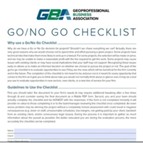
#9: Beyond gINT: A New Era in Geotechnical Data
This Business Brief will help geoprofessionals navigate the new market of vendors and products that has emerged in the wake of news that support and updates for geotechnical software product gINT will cease in 2026.
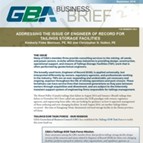
#8: Initial Curing of Concrete Test Specimens: Who Is Responsible for What
This Best Practices document provides valuable guidance for Construction Materials Engineering & Testing (CoMET) consultants. ACI Standard 301-10, Specification for Structural Concrete, sets forth ambiguous requirements for initial curing of concrete test specimens in the field. Because uncertainty and confusion are common precursors of delays, disputes, and claims, CoMET consultants need to take appropriate action to help the project team avoid related problems.
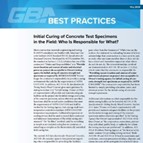
 #7: Interviewing the Right Way
#7: Interviewing the Right Way
This GBA Best Practices document sheds light on one of the least-trained roles throughout the engineering industry. Interviewing also involves a significant number of legal do’s and don’ts. Employers must understand the rule of law related to interview and application questions to ensure they’re performed in accordance with state and federal regulations.
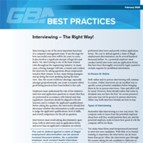

#6: Avoiding Absolutes
This GBA Best Practices resource guides members on the communications and legal pitfalls introduced when using words that connote an extreme condition. Usually, these words are harmless. However, when they are used by professionals within an instrument of professional service, correspondence, or other communication, absolutes are almost always inappropriate.
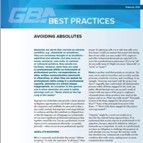
#5: Important Information About This Tailings Storage Facility Design Report
This document is designed to be provided to owners of tailings storage facilities and is a supplement to GBA’s other Tailings Storage Facility resources (see above). GBA member firms can use the document as-is and others may use it as a model for development of their own advisory document. (Free to all regardless of membership.)
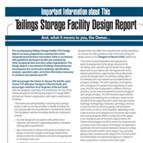
 #4: Addressing the Issue of Engineer of Record for Tailings Storage Facilities
#4: Addressing the Issue of Engineer of Record for Tailings Storage Facilities
This Business Brief informs and educates geoprofessional firms of the ever-increasing levels of risk associated with tailings-related work. (Free to all regardless of membership.)

 #3: Taboo Words
#3: Taboo Words
This Best Practices document examines language use and focuses on six “taboo words.” The consequences of using any one of them improperly can be so severe, many risk managers believe the words should be used only on a carefully considered, by-exception basis.
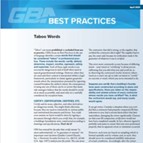

#2: Guide to the In-House Review of Geoprofessional Reports
The publication provides step-by-step instructions – as well as overarching concepts – for report writers and reviewers. The guide addresses a report’s ability to satisfy the contractual obligations it was intended to fulfill; the quality of its technical and risk-management content; and the clarity of presentation.
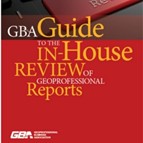
#1: Proposed Best Practices for Engineer of Record (EoR) for Tailings Dams
This Proposed Best Practices guideline provides recommendations from an informed body of geotechnical engineering practitioners for defining the roles and responsibilities of an EoR for a tailings dam or CCR dam to enhance safety, environmental suitability, and social sustainability. (Free to all regardless of membership.)
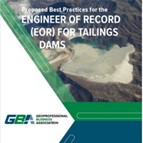
Check out the most popular Case Histories of the past 12 months HERE